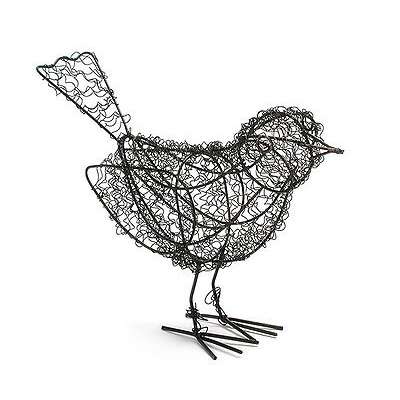Social understanding and communication are two areas impacted by autism neurology. The way this plays out is different from one autistic individual to the next. Typically, for autistics I have worked with, this means that they do not always pick up social information from the world around them through observation only as most people do. Instead, they sometimes need direct instruction concerning information their autistic neurology doesn’t allow them to automatically pick up and learn.
I think it is important that those around autistics understand that not having typical social understanding of same age peers is part of what autism means. Many times I have seen well meaning adults blame autistics for behavior that is a result of their brain not picking up and synthesizing social aspects of many things in the way people with typical brains do. It is common for adults to think that since the autistic is smart he should know better and that he is choosing to behave rudely. This misattribution has so many negative and far reaching consequences for everyone involved.
In general, it seems that people looking at an autistic really cannot see the autism. This means it is difficult for most people to know what behaviors are reflective of the underlying autism. If a person has a broken arm we can see the cast and understand the person will not be able to use his arm as typically expected. If an autistic person does not have the social understanding of how to act when losing a game we may see him act as a sore loser. We do not see the differently connected neurological pathways that feed information from a variety of brain areas in a split second that are not connected in the usual manner and therefore cannot be used to pull up good loser behavior. That is, we cannot see the autism at play – we can only see the sore loser behavior.
To help in seeing the autism when it comes to areas of unexpected behavior due to atypical social understanding that is part of the basis of an autism diagnosis, here is an example of direct teaching that took place over several months for a 12-year-old boy to learn the skills involved in being a good loser. Learning these skills allowed him to play games with others his age – something he very much wanted to do.
Example of Direct Teaching on How to Be a Good Loser:
Rodney could only play games if he could be assured ahead of time he would win. He would actually say, “I will only play if you let me win.” Rodney very much wanted to play video games and board games with others and even though he had above average intelligence, couldn’t grasp why other 12 year olds didn’t want to play with him.
Social Story: I wrote a social story as a way to give Rodney the social information around winning and losing when playing a game.
Cartooning: Additionally, each time Rodney had played a game he would relay the information and I would draw it out in cartooning style with the talk bubbles. Once the sequence of events were drawn out we would go back over it and fill in thought bubbles. Rodney was often miffed as to the thoughts and feelings of others. He would sometimes take the cartoon home so he could ask his parents if I had the thought bubbles “right.”
Modeling: Additionally, each time I saw Rodney we played UNO and he won. I was very demonstrative in portraying good loser behavior along with identifying it as good loser behavior.
Visual Support: We even started a chart called How to Be a Good Loser and took turns writing down my good loser behavior.
Video Technology: Then, we would watch a You Tube clip that showed kids playing games, particularly watching for good loser behavior. Eventually we watched both good and bad loser behavior of kids playing games and Rodney became quite good at sorting out which behavior was good and which was not good.
Visual Response Prediction Rating Scale: Because Rodney was fond of science and experiments; we made a loser behavior rating scale where we decided, based on the loser behavior whether he would be invited to play another game with his opponent. Here is a snippet from that scale.
Likelihood of Being Invited to Play Again
|
Loser Behavior |
Invited to Play Again |
Maybe Invited to Play Again |
Not Invited to Play Again |
|
“Good game” |
X |
|
|
|
“I hate you” and throws game pieces |
|
|
X |
|
“I hope I win next time” and kicking the board game |
|
X |
|
|
Quitting when it looks like you may lose |
|
|
X |
|
“Let’s have a rematch!” said with a voice expecting it to be a fun gam |
X |
|
|
Play Acting Desired Behavior: Next, Rodney practiced the good loser behaviors as if he were an actor in a play. I wrote a script where the characters, Jack and Jane played UNO with Jack winning the first game and Jane winning the second game. Each character exhibited good loser behavior when they lost. Rodney could do this play-acting, but he would always inform me, “This isn’t a real game. It is reading script.”
Video Technology: Then, we made our own video clips on Rodney’s iPad with him playing the character Jack being a good loser. We watched these video clips many times. It allowed Rodney to solidify the picture of himself using good loser behavior.
Predictability: Finally, I told Rodney that I would let him win game 1, 3 and 5 of UNO, but game 2 and 4 I would play my best and this meant that sometimes he might win and sometimes I might win.
Video Technology/Vicarious Behavior Rehearsing/Priming: Right before game 2 and 4 we would take a break to look at our Jack video clips.
Predictability: Whenever it looked like I was close to winning I would announce it so as to prepare Rodney, though he was keeping track pretty accurately.
Non-Verbal Prompting: The first time I was near winning Rodney announced he no longer wanted to play UNO. I pointed to our chart so he could be reminded of where that reaction was likely to lead. I started watching one of his video clips. He didn’t want to watch it, but because I was watching it he heard himself portraying his good loser behavior.
Allowing Extra Time for Processing During Difficult Moment: I told him to let me know when he was ready to finish the game. He took the iPad and watched the video clip and then said he was ready. It was really hard for him that first time he lost, but he was able to pull up the desired behavior.
Repetition and Practice: Eventually, with more practice, Rodney was able to pull up the good loser behaviors. In the beginning he needed to know before starting the game whether I was going to let him win or not. Eventually, we both played our best, neither one knowing who would win until we came to the end of the game.
Desired Outcome Achieved: Ultimately, Rodney was able to play games with others, which is what he so much wanted to do. One day he greeted me with an impish smile on his face and shyly said Darius had invited him to a sleepover on the weekend so they could play video games. He said, “I hope I win, but if I don’t I’ll be a good loser. I have to because mom says if it goes well I can invite Darius for a sleepover at my house next time.”
In retrospect, I could have added in a reinforcement system when Rodney started losing for real. We often reward ourselves when we do hard things well. Setting this up for Rodney likely would have helped him master the skill sooner. It would have also opened the way for us to talk about how he might chose to reward himself in the future when he does something well that was difficult for him to do in the moment. For example, if he loses graciously while playing a game with a friend, he might get 15 minutes extra of screen time (negotiated ahead of time with his parents). This would be similar to me deciding that on work mornings where I start with several hours of email to answer I will have a bagel with my coffee! We all set up self-reinforcement. Some of us do this without thinking much about it and others need to be directly taught to do this. It is simply another one of those life long skill that can be directly taught!
It is also noteworthy that many autistics need some sensory modifications to the environment, breaks to regulate their sensory system, instruction on how to play the game and other supports particular to the way autism presents in them. I have used Rodney’s example because it required many different support strategies over a long period of time for him to experience his desired outcome of having friends play games with him. Others I have worked with required both less and more in the areas of support strategies and time to learn new skills. While we can all learn from Rodney’s example and find many useful strategies, how support is given to another person needing to learn a similar skill will work best when it is individualized to the needs of that person.
BOOKS BY JUDY ENDOW
Endow, J. (2019). Autistically Thriving: Reading Comprehension, Conversational Engagement, and Living a Self-Determined Life Based on Autistic Neurology. Lancaster, PA: Judy Endow.
Endow, J. (2012). Learning the Hidden Curriculum: The Odyssey of One Autistic Adult. Shawnee Mission, KS: AAPC Publishing.
Endow, J. (2006). Making Lemonade: Hints for Autism’s Helpers. Cambridge, WI: CBR Press.
Endow, J. (2013). Painted Words: Aspects of Autism Translated. Cambridge, WI: CBR Press.
Endow, J. (2009). Paper Words: Discovering and Living With My Autism. Shawnee Mission, KS: AAPC Publishing.
Endow, J. (2009). Outsmarting Explosive Behavior: A Visual System of Support and Intervention for Individuals With Autism Spectrum Disorders. Shawnee Mission, KS: AAPC Publishing.
Endow, J. (2010). Practical Solutions for Stabilizing Students With Classic Autism to Be Ready to Learn: Getting to Go. Shawnee Mission, KS: AAPC Publishing.
Myles, B. S., Endow, J., & Mayfield, M. (2013). The Hidden Curriculum of Getting and Keeping a Job: Navigating the Social Landscape of Employment. Shawnee Mission, KS: AAPC Publishing.





